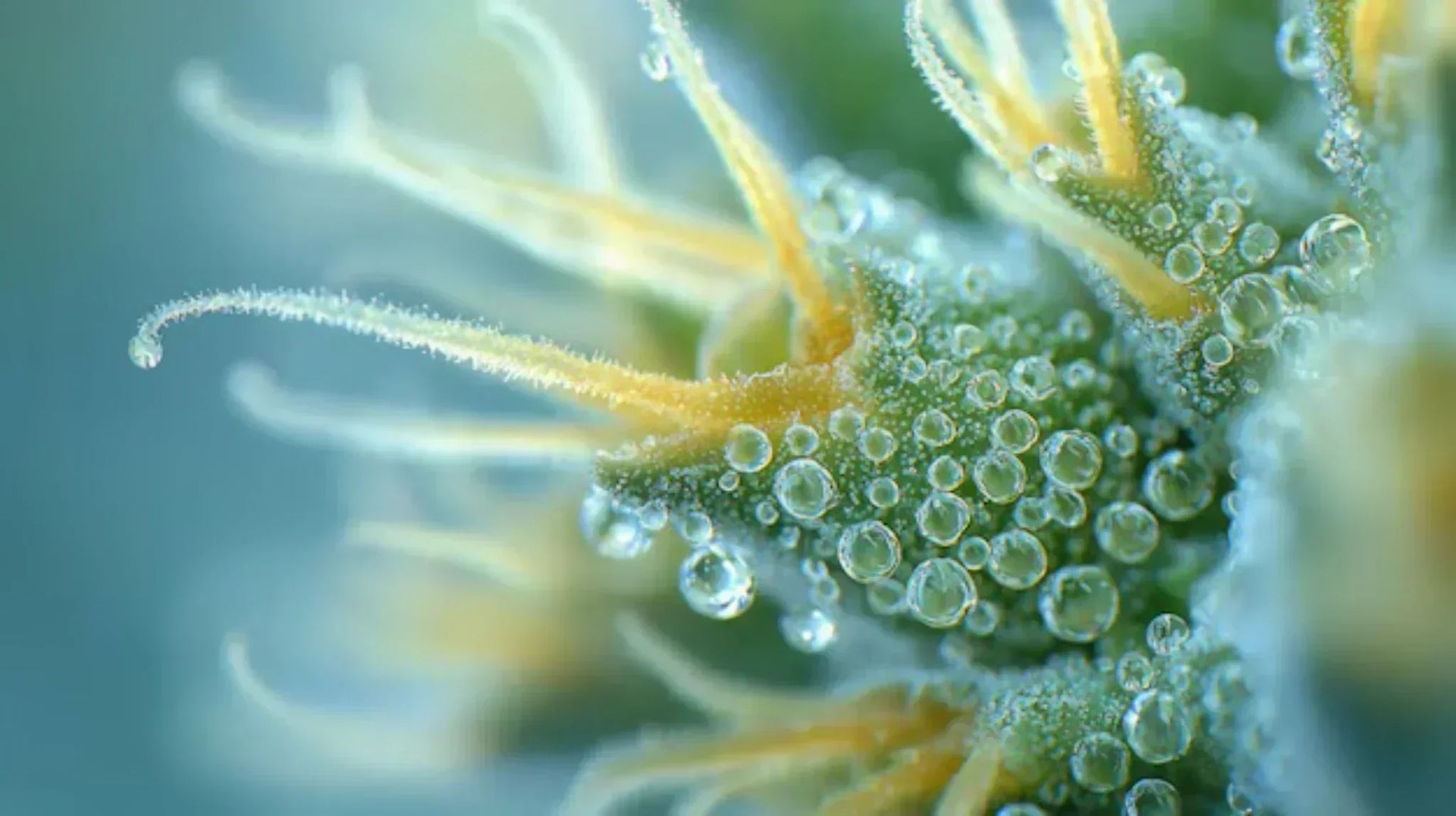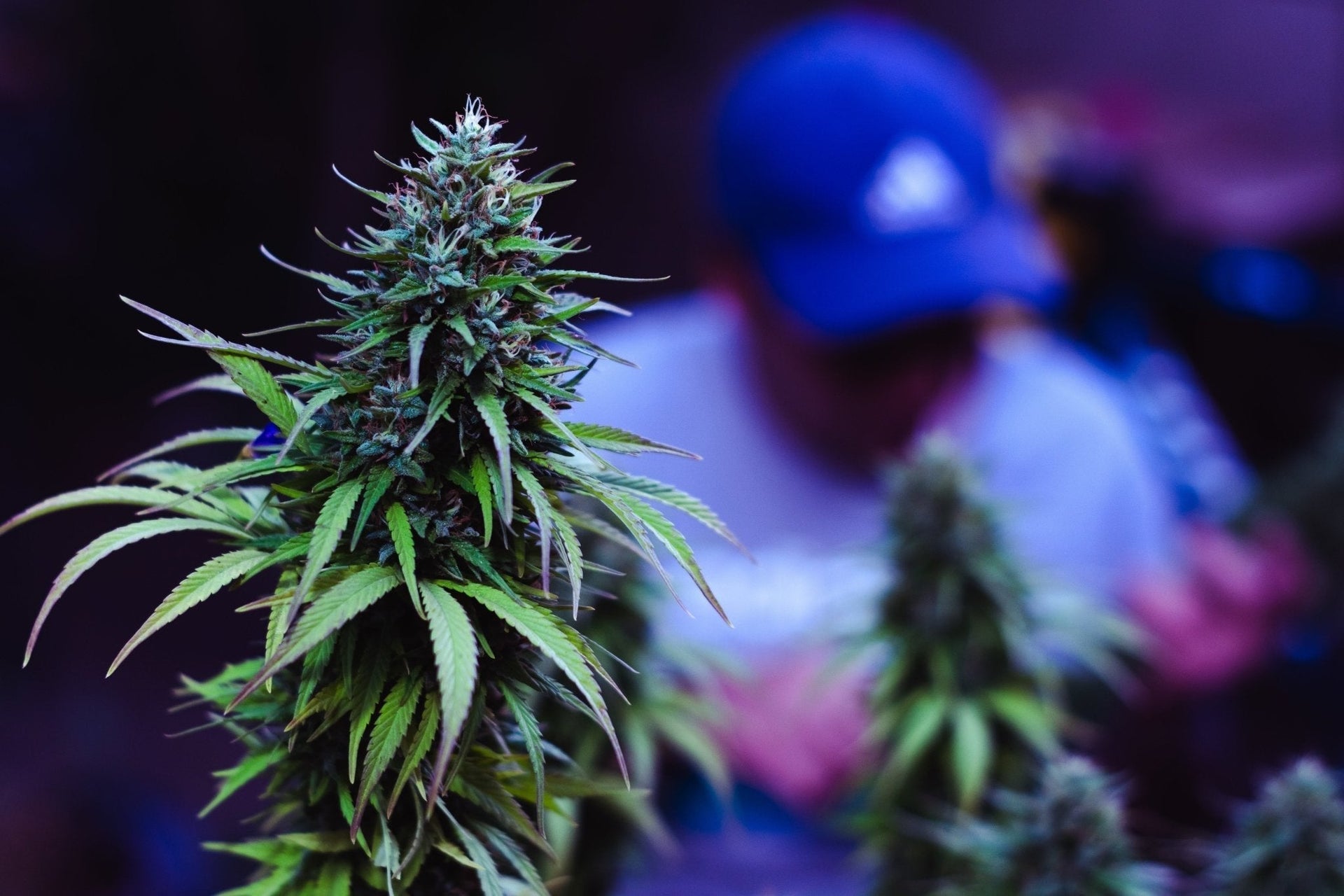
Hop Latent Viroid (HLVd): Why We Test Our Seeds and Cuttings
Cannabis is a resilient plant, but it is not immune to challenges especially from the dangerous Hop Latent Viroid (HLVd). This infection can not only reduce yields by up to 30% but also drastically lower flower quality. Despite its significant risk, HLVd often goes unnoticed for a long time, as it can remain symptomless.
At TerpHunters, we take this threat seriously. Our seeds and cuttings undergo regular testing to ensure you receive only healthy, HLVd-free genetics. In this article, you'll learn all about HLVd, its impact, and how to protect your plants.
What is Hop Latent Viroid (HLVd)?
HLVd is a highly infectious pathogen that was originally discovered in hop plants but has since spread to cannabis. Unlike viruses, a viroid consists only of RNA and can permanently alter the plant’s genetic material.
Key Characteristics of HLVd:
- Silent but deadly: Infected plants often show no symptoms until late in the growth cycle, making early detection difficult.
- Highly contagious: Spreads via cutting tools, physical contact, pollen, or infected clones.
- Widespread problem: Found in grow operations worldwide, often undetected due to lack of routine testing.
💡 Did you know? HLVd has only recently been recognized as a serious threat to the cannabis industry, as many regions still lack standardized testing protocols.
How Does HLVd Affect Cannabis Plants?
HLVd can significantly impact both yield quantity and flower quality.

Common Symptoms:
1️⃣ Growth Issues:
- Stunted growth & deformed leaves
- Weaker stems, reduced structural integrity
2️⃣ Reduced Potency:
- Lower resin production → fewer cannabinoids (THC, CBD)
- Weakened terpene profile → diminished aroma & flavor
3️⃣ Yield Losses:
- Up to 30% yield reduction due to poor flower development
- Smaller, less dense buds
🔬 Why is HLVd so dangerous? Since symptoms appear late, growers often only realize their plants are infected at harvest time, when yield and potency are already compromised. There is no cure – prevention is crucial.
How Do We Test Our Seeds and Cuttings for HLVd?
At TerpHunters, we use cutting-edge testing methods to ensure our plants are HLVd-free.

Our Testing Process:
✅ Regular Screening: Our stock undergoes routine testing.
✅ PCR Testing: Using the highly precise Polymerase Chain Reaction (PCR) method, we detect HLVd in the earliest stages – before visible symptoms appear.
✅ Strict Hygiene Protocols: We follow stringent tool sterilization and handling standards to prevent contamination.
✅ Full Transparency: Our test results are available online, so you know exactly what you're getting.
💡 Why is this important? Many suppliers do not test for HLVd, allowing the viroid to spread undetected and destroy entire crops.
How Can You Protect Your Plants from HLVd?
1️⃣ Maintain Strict Hygiene
- Sanitize tools: Use ethanol or hydrogen peroxide to clean scissors and knives after each use.
- Wear gloves: Prevents contamination through direct contact.
2️⃣ Quarantine New Plants
- Keep new clones or mother plants isolated before integrating them into your main grow area.
- This helps detect potential infections early.
3️⃣ Conduct Regular Testing
- Especially important for large-scale grows or when introducing new genetics frequently.
Why Buying Tested Seeds and Cuttings is Essential
Infected plant material can threaten your entire crop and long-term investments. Since many regions do not require HLVd testing, it is up to you as a grower to take precautions.
💡 TerpHunters Offers:
- Certified HLVd-free seeds & clones with verified test results.
- 100% Transparency: Lab reports available on our website.
- Top-quality genetics: Healthy plants for maximum yield & potency.
FAQ – Frequently Asked Questions
❓ How do I recognize HLVd? 🔹 Often symptomless, but signs include stunted growth, deformed leaves, and reduced resin production.
❓ Can HLVd be cured? 🔹 No, there is no cure only prevention and hygiene practices can help.
❓ What grow techniques reduce the risk? 🔹 Isolating new plants, sterilizing tools, and regular testing are crucial precautions.
Conclusion: Identifying & Preventing HLVd
Hop Latent Viroid is a serious threat to the cannabis industry. Without consistent testing and hygiene measures, it can silently spread and destroy crops.
🚀 With HLVd-tested seeds & clones from TerpHunters, you ensure top-tier quality and safety!
Cannabis is a resilient plant, but it is not immune to challenges especially from the dangerous Hop Latent Viroid (HLVd). This infection can not only reduce yields by up to 30% but also drastically lower flower quality. Despite its significant risk, HLVd often goes unnoticed for a long time, as it can remain symptomless.
At TerpHunters, we take this threat seriously. Our seeds and cuttings undergo regular testing to ensure you receive only healthy, HLVd-free genetics. In this article, you'll learn all about HLVd, its impact, and how to protect your plants.
What is Hop Latent Viroid (HLVd)?
HLVd is a highly infectious pathogen that was originally discovered in hop plants but has since spread to cannabis. Unlike viruses, a viroid consists only of RNA and can permanently alter the plant’s genetic material.
Key Characteristics of HLVd:
- Silent but deadly: Infected plants often show no symptoms until late in the growth cycle, making early detection difficult.
- Highly contagious: Spreads via cutting tools, physical contact, pollen, or infected clones.
- Widespread problem: Found in grow operations worldwide, often undetected due to lack of routine testing.
💡 Did you know? HLVd has only recently been recognized as a serious threat to the cannabis industry, as many regions still lack standardized testing protocols.
How Does HLVd Affect Cannabis Plants?
HLVd can significantly impact both yield quantity and flower quality.

Common Symptoms:
1️⃣ Growth Issues:
- Stunted growth & deformed leaves
- Weaker stems, reduced structural integrity
2️⃣ Reduced Potency:
- Lower resin production → fewer cannabinoids (THC, CBD)
- Weakened terpene profile → diminished aroma & flavor
3️⃣ Yield Losses:
- Up to 30% yield reduction due to poor flower development
- Smaller, less dense buds
🔬 Why is HLVd so dangerous? Since symptoms appear late, growers often only realize their plants are infected at harvest time, when yield and potency are already compromised. There is no cure – prevention is crucial.
How Do We Test Our Seeds and Cuttings for HLVd?
At TerpHunters, we use cutting-edge testing methods to ensure our plants are HLVd-free.

Our Testing Process:
✅ Regular Screening: Our stock undergoes routine testing.
✅ PCR Testing: Using the highly precise Polymerase Chain Reaction (PCR) method, we detect HLVd in the earliest stages – before visible symptoms appear.
✅ Strict Hygiene Protocols: We follow stringent tool sterilization and handling standards to prevent contamination.
✅ Full Transparency: Our test results are available online, so you know exactly what you're getting.
💡 Why is this important? Many suppliers do not test for HLVd, allowing the viroid to spread undetected and destroy entire crops.
How Can You Protect Your Plants from HLVd?
1️⃣ Maintain Strict Hygiene
- Sanitize tools: Use ethanol or hydrogen peroxide to clean scissors and knives after each use.
- Wear gloves: Prevents contamination through direct contact.
2️⃣ Quarantine New Plants
- Keep new clones or mother plants isolated before integrating them into your main grow area.
- This helps detect potential infections early.
3️⃣ Conduct Regular Testing
- Especially important for large-scale grows or when introducing new genetics frequently.
Why Buying Tested Seeds and Cuttings is Essential
Infected plant material can threaten your entire crop and long-term investments. Since many regions do not require HLVd testing, it is up to you as a grower to take precautions.
💡 TerpHunters Offers:
- Certified HLVd-free seeds & clones with verified test results.
- 100% Transparency: Lab reports available on our website.
- Top-quality genetics: Healthy plants for maximum yield & potency.
FAQ – Frequently Asked Questions
❓ How do I recognize HLVd? 🔹 Often symptomless, but signs include stunted growth, deformed leaves, and reduced resin production.
❓ Can HLVd be cured? 🔹 No, there is no cure only prevention and hygiene practices can help.
❓ What grow techniques reduce the risk? 🔹 Isolating new plants, sterilizing tools, and regular testing are crucial precautions.
Conclusion: Identifying & Preventing HLVd
Hop Latent Viroid is a serious threat to the cannabis industry. Without consistent testing and hygiene measures, it can silently spread and destroy crops.
🚀 With HLVd-tested seeds & clones from TerpHunters, you ensure top-tier quality and safety!




